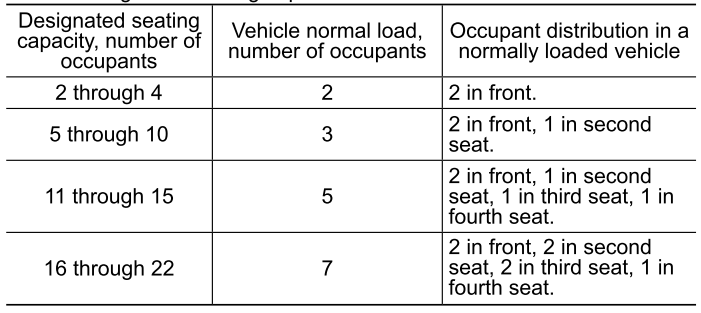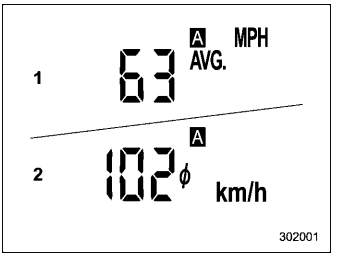Subaru Forester: Tire information / Glossary of tire terminology
- Accessory weight
The combined weight (in excess of those standard items which may be replaced) of automatic transmission, power steering, power brakes, power windows, power seats, radio, and heater, to the extent that these items are available as factory-installed equipment (whether installed or not).
- Bead
The part of the tire that is made of steel wires, wrapped or reinforced by ply cords and that is shaped to fit the rim.
- Bead separation
A breakdown of the bond between components in the bead.
- Bias ply tire
A pneumatic tire in which the ply cords that extend to the beads are laid at alternate angles substantially less than 90 degrees to the centerline of the tread.
- Carcass
The tire structure, except tread and sidewall rubber which, when inflated, bears the load.
- Chunking
The breaking away of pieces of the tread or sidewall.
- Cold tire pressure
The pressure in a tire that has been driven less than 1 mile or has been standing for three hours or more.
- Cord
The strands forming the plies in the tire.
- Cord separation
The parting of cords from adjacent rubber compounds.
- Cracking
Any parting within the tread, sidewall, or inner liner of the tire extending to cord material.
- Curb weight
The weight of a motor vehicle with standard equipment including the maximum capacity of fuel, oil and coolant, and if so equipped, air conditioning and additional weight optional engine.
- Extra load tire
A tire designed to operate at higher loads and higher inflation pressure than the corresponding standard tire.
- Groove
The space between two adjacent tread ribs.
- Innerliner
The layer(s) forming the inside surface of a tubeless tire that contains the inflating medium within the tire.
- Innerliner separation
The parting of the innerliner from cord material in the carcass.
- Intended outboard sidewall
(1) The sidewall that contains a whitewall, bears white lettering or bears manufacturer, brand, and/or model name molding that is higher or deeper than the same molding on the other sidewall of the tire, or
(2) The outward facing sidewall of an asymmetrical tire that has a particular side that must always face outward when mounting on a vehicle.
- Light truck (LT) tire
A tire designated by its manufacturer as primarily intended for use on lightweight trucks or multipurpose passenger vehicles.
- Load rating
The maximum load that a tire is rated to carry for a given inflation pressure.
- Maximum inflation pressure
The maximum cold inflation pressure to which a tire may be inflated.
- Maximum load rating
The load rating for a tire at the maximum permissible inflation pressure for that tire.
- Maximum loaded vehicle weight
The sum of:
(a) Curb weight
(b) Accessory weight
(c) Vehicle capacity weight
(d) Production options weight
- Maximum permissible inflation pressure
The maximum cold inflation pressure to which a tire may be inflated.
- Measuring rim
The rim on which a tire is fitted for physical dimension requirements.
- Normal occupant weight
150 lbs (68 kg) times the number of occupants specified in the second column of Table 1 that is appended to the end of this section.
- Occupant distribution
Distribution of occupants in a vehicle as specified in the third column of Table 1 that is appended to the end of this section.
- Open splice
Any parting at any junction of tread, sidewall, or innerliner that extends to cord material.
- Outer diameter
The overall diameter of an inflated new tire.
- Overall width
The linear distance between the exteriors of the sidewalls of an inflated tire, including elevations due to labeling, decorations, or protective bands or ribs.
- Passenger car tire
A tire intended for use on passenger cars, multipurpose passenger vehicles, and trucks, that have a gross vehicle weight rating (GVWR) of 10,000 lbs (4,535 kg) or less.
- Ply
A layer of rubber-coated parallel cords.
- Ply separation
A parting of rubber compound between adjacent plies.
- Pneumatic tire
A mechanical device made of rubber, chemicals, fabric and steel or other materials, that, when mounted on an automotive wheel, provides the traction and contains the gas or fluid that sustains the load.
- Production options weight
The combined weight of those installed regular production options weighing over 5.1 lbs (2.3 kg) in excess of those standard items which they replace, not previously considered in curb weight or accessory weight, including heavy duty brakes, ride levelers, roof rack, heavy duty battery, and special trim.
- Radial ply tire
A pneumatic tire in which the ply cords that extend to the beads are laid at substantially 90 degrees to the centerline of the tread.
- Recommended inflation pressure
The cold inflation pressure recommended by a vehicle manufacturer.
- Reinforced tire
A tire designed to operate at higher loads and at higher inflation pressures than the corresponding standard tire.
- Rim
A metal support for a tire or a tire and tube assembly upon which the tire beads are seated.
- Rim diameter
Nominal diameter of the bead seat.
- Rim size designation
Rim diameter and width.
- Rim type designation
The industry of manufacturer’s designation for a rim by style or code.
- Rim width
Nominal distance between rim flanges.
- Section width
The linear distance between the exteriors of the sidewalls of an inflated tire, excluding elevations due to labeling, decoration, or protective bands.
- Sidewall
That portion of a tire between the tread and bead.
- Sidewall separation
The parting of the rubber compound from the cord material in the sidewall.
- Snow tire
A tire that attains a traction index
equal to or greater than 110, compared
to the ASTM E-1136-93
Standard Reference Test Tire,
when using the snow traction test
as described in ASTM F-1805-00,
Standard Test Method for Single
Wheel Driving Traction in a Straight
Line on Snow-and Ice-Covered
Surfaces, and that is marked with
an Alpine Symbol  on at least
one sidewall.
on at least
one sidewall.
- Test rim
The rim on which a tire is fitted for testing, and it may be any rim listed as appropriate for use with that tire.
- Tread
That portion of a tire that comes into contact with the road.
- Tread rib
A tread section running circumferentially around a tire.
- Tread separation
Pulling away of the tread from the tire carcass.
- Treadwear indicators (TWI)
The projections within the principal grooves designed to give a visual indication of the degrees of wear of the tread.
- Vehicle capacity weight
The rated cargo and luggage load plus 150 lbs (68 kg) times the vehicle’s designated seating capacity.
- Vehicle maximum load on the tire
Load on an individual tire that is determined by distributing to each axle its share of the maximum loaded vehicle weight and dividing by two.
- Vehicle normal load on the tire
Load on an individual tire that is determined by distributing to each axle its share of the curb weight, accessory weight, and normal occupant weight (distributed in accordance with Table 1 that is appended to the end of this section) and dividing by 2.
- Wheel-holding fixture
The fixture used to hold the wheel and tire assembly securely during testing.
Table 1 — Occupant loading and distribution for vehicle normal load for various designated seating capacities

 Tire care – maintenance and safety practices
Tire care – maintenance and safety practices
Check on a daily basis that the
tires are free from serious damage,
nails, and stones. At the same time,
check the tires for abnormal wear.
Inspect the tire tread regularly
and replace the tires before their
tread wear indicators become visible...
Other information:
Subaru Forester 2019-2025 Owners Manual: Retrieval of the memory position registered with access key fob
Hold the registered access key fob. Unlock the driver’s door by pressing the button or touching the sensor behind the door handle. Open the driver’s door. A chirp will sound and the seat and angle of the outside mirrors moves to the registered position...
Subaru Forester 2019-2025 Owners Manual: To set cruise control
Cruise control main button Press the cruise control main button. The cruise control indicator light on the combination meter will illuminate. Depress the accelerator pedal until the vehicle reaches the desired speed. Press the “RES/SET” switch to the “SET” side and release it...
Categories
- Manuals Home
- Subaru Forester Owners Manual
- Subaru Forester Service Manual
- Power steering warning light
- Replacing battery of access key fob
- Disabling functions
- New on site
- Most important about car
Average vehicle speed

This display shows the average vehicle speed since the trip meter was last reset. Pressing the TRIP RESET switch toggles the display between the average vehicle speed corresponding to the A trip meter display and the average vehicle speed corresponding to the B trip meter display. When either of the trip meter displays is reset, the corresponding average vehicle speed value is also reset.

